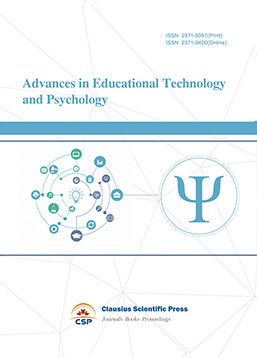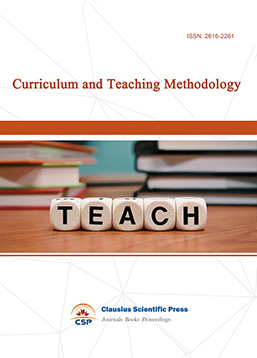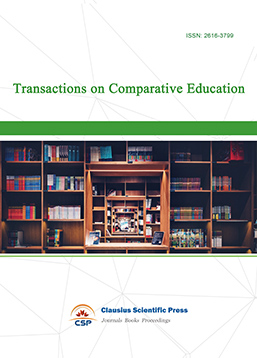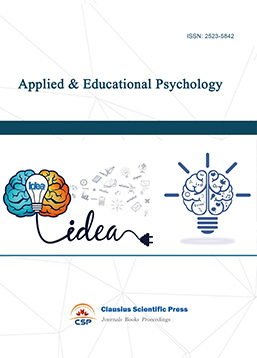Language and Social Identity Empowerment of International Students in Higher Education
DOI: 10.23977/aduhe.2025.070105 | Downloads: 23 | Views: 869
Author(s)
Di Yuan 1
Affiliation(s)
1 Faculty of Education, Tianjin Normal University, Tianjin, China
Corresponding Author
Di YuanABSTRACT
This paper explores the pivotal role of language in shaping social identity and its impact on the learning experiences of international students in American higher education. Drawing from Vygotsky's emphasis on speech as a mediator between mind and brain, the study delves into how language functions as a site of struggle for self-definition and control among these students. Qualitative approach was employed by the author through conducting interviews with three international students to gain insights into their lived experiences. By analyzing their narratives, it aims to uncover strategies for empowering students' linguistic capabilities and fostering a more inclusive learning environment that acknowledges and respects their diverse backgrounds. The research also calls for educators to adopt a holistic perspective in addressing the unique needs of international learners, thereby enhancing their educational journey in the U.S. classroom.
KEYWORDS
Language; Identity empowerment; International studentsCITE THIS PAPER
Di Yuan, Language and Social Identity Empowerment of International Students in Higher Education. Adult and Higher Education (2025) Vol. 7: 29-35. DOI: http://dx.doi.org/10.23977/aduhe.2025.070105.
REFERENCES
[1] Kozulin, A., Gindis, B., Ageyev, V. & Miller, S. (Eds.). (2003). Vygotsky Educational Theory in Cultural Context. Cambridge: Cambridge University Press
[2] Voloshinov, V. N. (1986). Marxism and the philosophy of language. Cambridge, MA: Harvard University Press.
[3] Moll, L.S. (2014). Vygotsky and Education. New York: Routledge.
[4] Mottet, T. P., Richmond, V. P., & McCroskey, J. C. (2006). Assesing instructional communication. In T. P. Mottet, V. P. Richmond, & J. C. McCroskey, Handbook of Instructional Communication: Rhetorical & Relational Perspectives. Boston, MA: Allyn & Bacon.
[5] Lewis, C., & Moje, E. B. (2003). Sociocultural perspectives meet critical theories. International Journal of Learning, 10, 1979-1995.
[6] Anzaldu´a, G. (2002). Now let us shift…the path of conocimiento…inner work, public acts. In G. Anzaldu´a& A. Keating (Eds.), This bridge we call home: Radical visions for transformation (pp. 540–578). New York, NY: Routledge.
[7] Aguilar Valdez, J., López, C. A., RobertsHarris, D., TorresVelásquez, D., Lobo, G., & Westby, C. (2013). Ciencia en Nepantla: the journey of Nepantler@s in science learning and teaching. Cultural Studies in Science Education, 8, 821858.
[8] Dimick, A.S. (2012), Student empowerment in an environmental science classroom: Toward a framework for social justice science education. Sci. Ed., 96: 990-1012. https://doi.org/10.1002/sce.21035
[9] Gutstein, E. (2003). Teaching and learning mathematics for social justice in an urban, Latino school. Journal for Research in Mathematics Education, 34(1), 37-73.
[10] North, C. (2008). What is all this talk about "social justice"? Mapping the terrain of education's latest catchphrase. Teachers College Record, 110(6), 1182-1206.
[11] McQuillan, P. J. (2005). Possibilities and pitfalls: A comparative analysis of student empowerment. American Educational Research Journal, 42(4), 639-670.
[12] Bakhtin, M. (1981). The dialogic imagination. C. Emerson & M. Holquist (Trans.) Austin, TX: University of Texas Press, 1981) 69 (1981).
[13] Allen, B.J. (2011). Critical communication pedagogy as a framework for teaching difference and organizing. In D.K. Muby (eds) Reframing difference in organizational communication studies: Research, Pedagogy, Practice. Thousand Oaks, CA: SAGE Publication, Inc.
| Downloads: | 22176 |
|---|---|
| Visits: | 1244447 |

 Download as PDF
Download as PDF



